Elderly Female Gashangi Loses Battle with Melanoma
By Gorilla Doctors Staff on Thursday, July 3rd, 2014 in Blog.**Warning: Blog Contains Graphic Imagery**
by Dr. Jan Ramer
Brave Gashangi, an adult female mountain gorilla from Nykamawe group in Virunga National Park, lost her battle with melanoma last week. This is the first known case of melanoma in a gorilla.
Gashangi’s tumor was first seen on her left upper lip in December 2012 when Humba group was visited for the first time after the M23 takeover of the Mikeno sector of the park. Unfortunately the group could not be monitored for seven months previous to this, so we really do not know how long the tumor had been there when it was first spotted in December 2012. Gashangi was monitored very closely over the next months (once it was safe to go to the group) and the tumor on her lip grew slowly, and was reported to be seen bleeding on occasion by rangers. At the time, Gashangi had an infant and was eating well, staying with the group, and behaving normally, despite the mass on her lip.
Unfortunately Gashangi disappeared from the group in May 2013. Rangers reported that Humba group had exited the park, as they sometimes do, but that Gashangi and her ~2 year old infant, Shamukungu, (born 7 March 2011, unknown sex) remained in the forest. They remained lost from the group for almost 3 months and when Gashangi returned to the group on August 26th, 2013 little Shamukungu was not with her. Gashangi was still relatively strong, but the mass was growing.
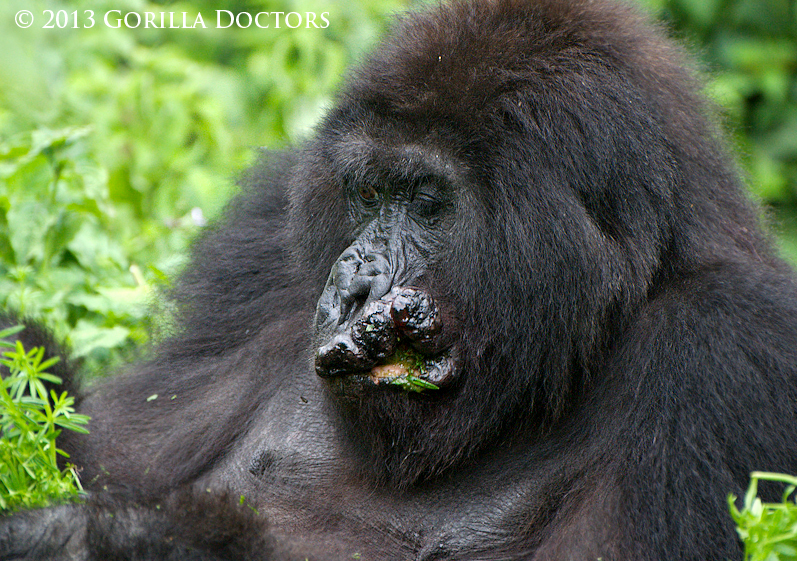 Elderly female mountain gorilla Gashangi, with a large tumor on her upper lip.
Elderly female mountain gorilla Gashangi, with a large tumor on her upper lip.
Intermittent insecurity continued in the area but in October 2013, when Gashangi appeared to deteriorate and was reported weak, and with flies buzzing around the infected tumor, Gorilla Doctors intervened. In consultation with ICCN, Gorilla Doctors made the decision to anesthetize Gashangi to surgically remove the mass to make her more comfortable, and to make a diagnosis.
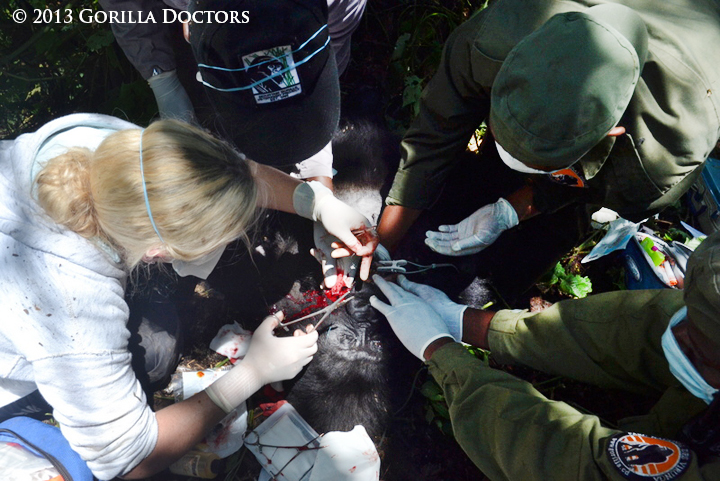 Drs. Dawn and Eddy intervened to remove the tumor in October 2013.
Drs. Dawn and Eddy intervened to remove the tumor in October 2013.
On October 5th, 2013, Drs. Dawn and Eddy anesthetized Gashangi and attempted to surgically remove the mass. However, the mass was so large that it could not be completely removed without disfiguring Gashangi to the point of compromising her life as a wild gorilla. They did the best they could and Gashangi recovered well, regaining strength. A diagnosis of malignant melanoma was made from histopathology sections of the biopsy. From October 2013 until December 2013, there was no sign of mass re-growth and Gashangi remained strong. 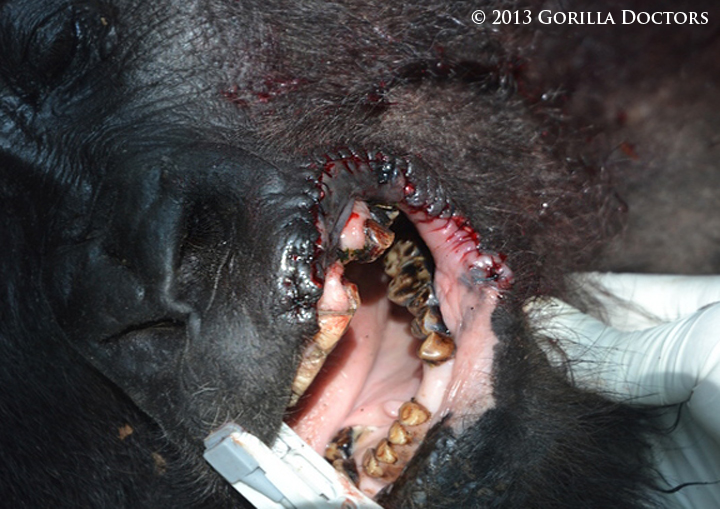 Post intervention to remove the tumor from Gashangi’s lip in October 2013.
Post intervention to remove the tumor from Gashangi’s lip in October 2013.
Unfortunately on February 18th, 2014, during a routine health check, it was clear the tumor had returned. Gashangi was doing well and was observed eating well, using the right side of her mouth, moving actively, and was bright and very alert. At that time rangers suspected that Gashangi was pregnant.
Gorilla Doctors put their heads together – treatment options for a wild gorilla were limited. Consultations began with oncologists in the USA and ICCN officials about the challenges of cancer treatment in a wild gorilla. In humans and dogs with melanoma, a very aggressive surgery could be staged, removing the entire tumor and 4 cm margins to be sure no cancer cells were left in the tissue. This requires intensive follow-up care and subsequent reconstructive surgeries. This was simply not possible for Gashangi – we never take an animal out of the forest – we needed to find an option that would allow Gashangi to stay wild.
We decided to use a DNA tyrosinase vaccine that has had some success in mice, dogs and humans with malignant melanoma. It is an expensive vaccine, but is safe in pregnancy and has few side effects. The vaccination was delivered by dart in a series of 4 vaccines, spaced ~2 weeks apart starting on May 4th, 2014. The goal was to attempt to keep Gashangi as healthy and comfortable as possible, especially if she was indeed pregnant.
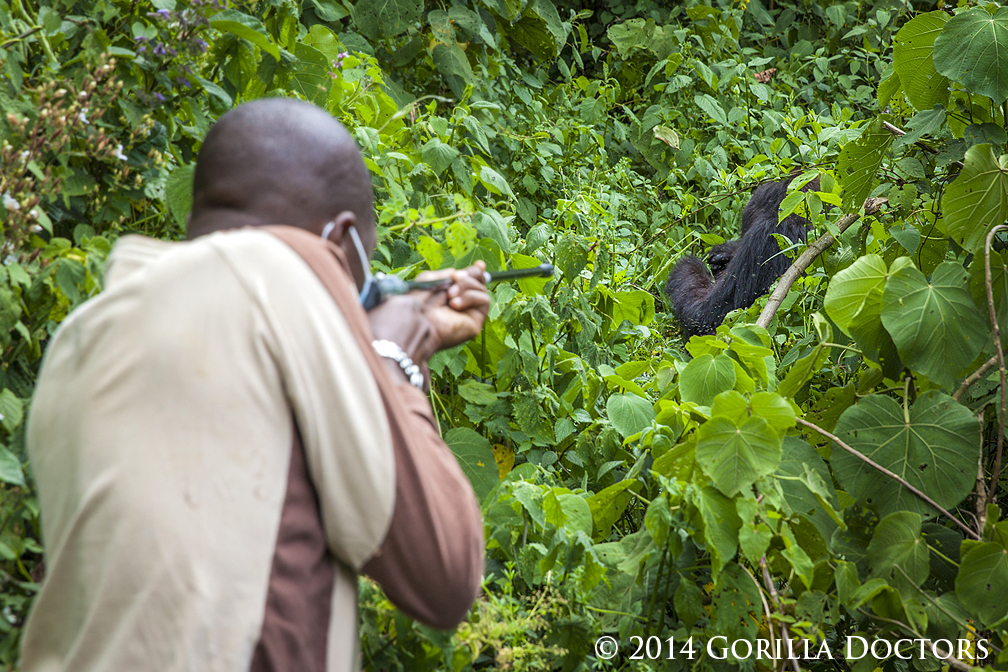 Dr. Eddy darts Gashangi with a vaccine. Photo by Marcus Westberg.
Dr. Eddy darts Gashangi with a vaccine. Photo by Marcus Westberg.
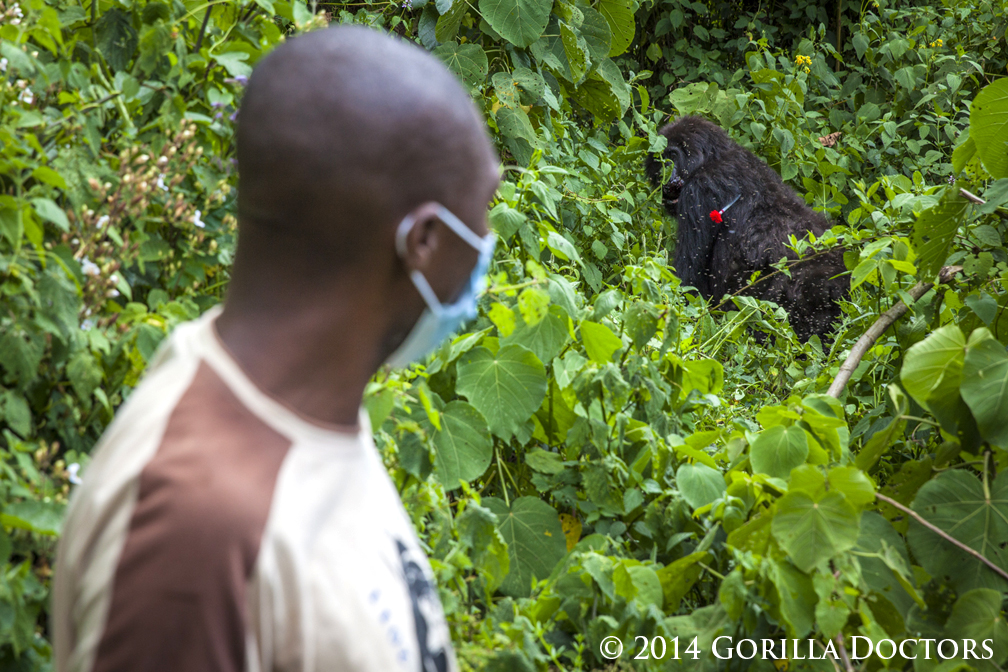 Gashangi successfully darted with the vaccine by Dr. Eddy. Photo by Marcus Westberg.
Gashangi successfully darted with the vaccine by Dr. Eddy. Photo by Marcus Westberg.
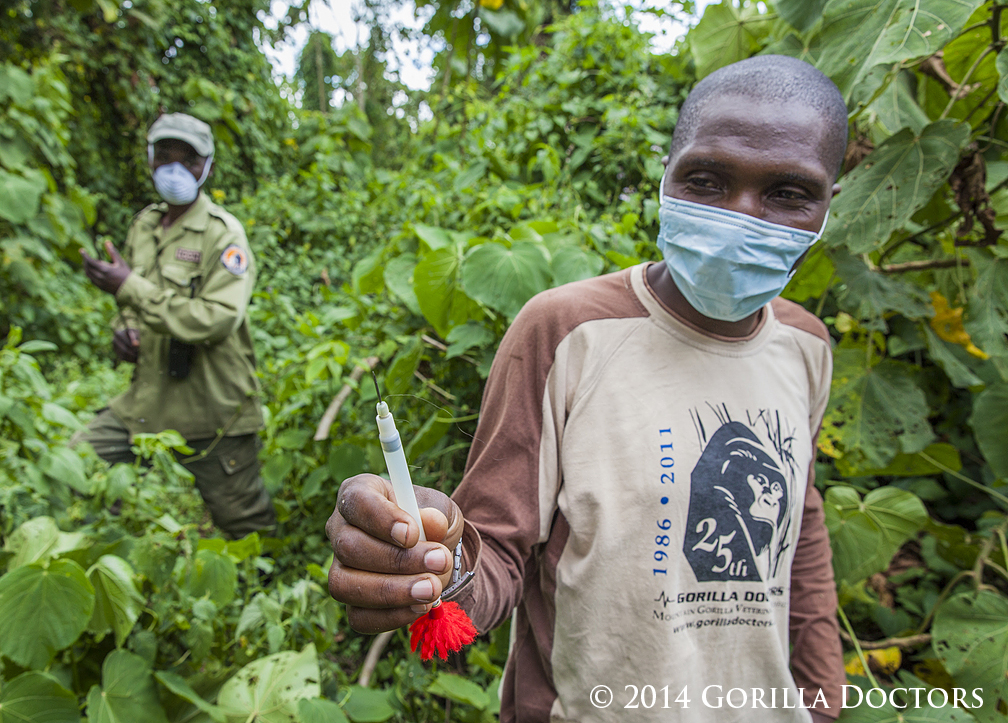 Dr. Eddy recovers the dart after Gashangi discards it in the vegetation. Photo by Marcus Westberg.
Dr. Eddy recovers the dart after Gashangi discards it in the vegetation. Photo by Marcus Westberg.
Despite our best efforts, no improvement in tumor growth was noted over the course of treatment. For the first month, Gashangi remained strong but on June 23rd, 2014 when the last vaccine was delivered, rangers reported that she had been deteriorating for the previous 3 days with considerable bleeding from the tumor. She was eating little, moving slowly, and she was found more than 500 meters from that group. The mass was larger and appeared to be infected.
After delivering the last melanoma vaccine she was also treated with an antibiotic (Ceftriaxone) and ketoprofen (Analgesic-Antiinflamatory-Antipyretic). The next day Gashangi was observed for several hours during which she remained alone and did not eat. She was weak. Clearly the tumor was getting the best of her. Intervention for assessment and supportive care to relieve pain and discomfort was approved by ICCN authorities, with the knowledge that anesthesia was a great risk in an animal this debilitated.
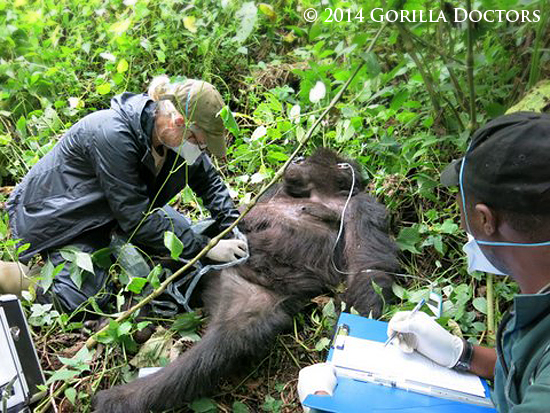 Drs. Jan and Eddy intervene to deliver supportive care to relieve pain and discomfort.
Drs. Jan and Eddy intervene to deliver supportive care to relieve pain and discomfort.
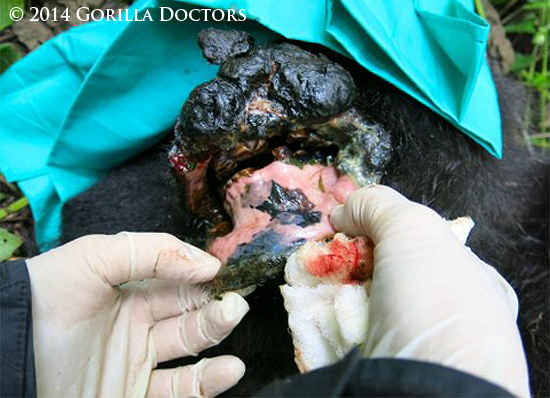 Gashangi’s tumor had grown in size, despite the vaccine treatment.
Gashangi’s tumor had grown in size, despite the vaccine treatment.
On June 25th Gashangi was anesthetized and found to be very thin with her stomach only 1/8 full. Fortunately she was not pregnant. The mass was surgically debulked in an attempt to make her more comfortable, but mercifully she did not recover from anesthesia. During the necropsy, we discovered the cancer had spread to her lymph nodes, lungs, and liver.
Gashangi fought her cancer the only way she knew how, with courage and dignity, leaving the group as she weakened in the last few days. Because this is the first reported case of melanoma in a gorilla, we hope, through further diagnostics on her tissues, that we can learn more about this tumor so that we might be able to help the next great ape fighting this terrible cancer.


 Donate
Donate
